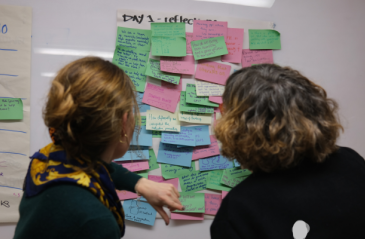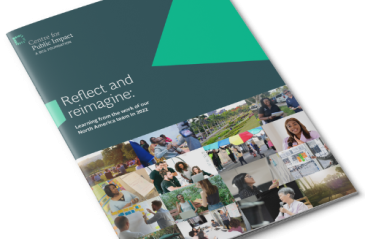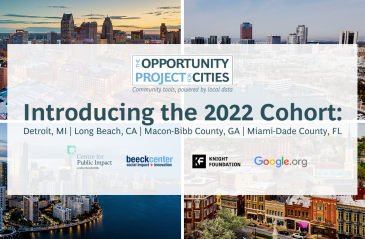
Five things we recently learned about government failure

It is very difficult to improve failing education systems but Haryana shows it can be done
Share articleMot only is it important to set a goal – it’s also important to measure it
Share articleFacebook, Whatsapp and Google docs all helped communicate the ideas to 100,000 people
Share articleWe put our vision for government into practice through learning partner projects that align with our values and help reimagine government so that it works for everyone.
I've wanted to work in education for a long time. I truly believe it can be the biggest lever to break out from poverty. In India, though, the reality all too often tells another story.
By the age of 10, almost half of Indian children in government schools - more than 40 million in total - have fallen far behind. They can barely read and cannot do simple arithmetic. No wonder nearly 50% of Indian parents - most of whom are poor, remember - are choosing for their kids to be privately educated, even when free schooling is available.
Most people believe that it is very difficult to improve failing government systems - especially education. But it can be done.
In the summer of 2013, we got a call from the head of the education department in Haryana - a midsized state in Northern India. Two years into her role and her frustration was palpable: “I've tried a number of things but nothing seems to work. There are a few successes but the needle overall isn't moving. Can you work with us to improve the situation in our public schools?”
Fast-forward to January this year and the Indian government revealed that, while learning levels in other Indian states continue to hold steady or even decline, Haryana is one of two that have reversed this trend. So how did we do this?
First, we wanted to focus on outcomes. Our initial discussions saw a few ideas put forward, such as training 50,000 teachers or introducing activity-based learning. But these are inputs - not outputs. Instead, we said that 80% of children should be at grade-level competency in languages, maths and sciences - that's an outcome goal. There are many other issues to address but even achieving this one goal would be an uphill task, so that takes precedence to start with.
But not only is it important to set a goal - it's also important to measure it. What gets measured gets done. Today, the state measures the progress of all children up to grade 8 - that's 1.8 million students - every month on every subject. It's a simple process that takes three hours every month and this data is examined by everyone in the department - from senior leadership to the newest teachers.
Second, we had to have the right goals. Some were prioritising new classrooms; others were more focused on HR issues rather than academic outcomes. Now, everyone is geared towards learning. They do everything else, but what they care about is learning - it's learning that's measured, monitored, discussed and rewarded - at every level and in several ways.
Third, we had to design interventions to scale. Education attracts a lot of philanthropy. We found amazing projects being done by NGOs, foundations and social entrepreneurs, but they were all in 50, 100 or 500 schools and weren't designed to scale. As we began to detail our initiatives, we set a principle - no dependence on additional people or money. Everything had to be done within state budgets and using existing human resources.
Our biggest challenge, though, was when we were ready to launch the first set of initiatives. How do you roll something out to 15,000 poorly connected locations and 100,000 people? It was time to think out of the box. Whatsapp, Facebook, Google docs - all were deployed to communicate and create feedback routes for every initiative.
Today, all Haryana's teachers are divided into a few hundred WhatsApp groups, and messages and clarifications spread like wildfire. Now, when an initiative leader has an announcement, they don't send letters they Whatsapp.
So where are we now? Today, when you go to a school - any school in Haryana - teachers have simple specialised materials and methods to deal with the complex classrooms. All students are assessed once a month on their progress and the data is shared back with the principals and teachers. All this has been rolled out in 15,000 schools and to 100,000 teachers in two years.
Our success shows that government can transform - and transform rapidly. It also demonstrates that transformations need to have well-defined goals and a well thought through, detailed roadmap with owners, especially as the levers of transformation are not always obvious.
We also learned that governments don't need external funds and armies of people as much as they need support in design and innovation in implementation. When government takes control and does things on its own, it can make progress far more rapidly and with much greater ownership and rigour than external parties can.
So let's go out there and make high-quality public education a reality around the world.









